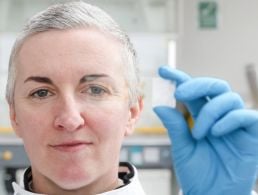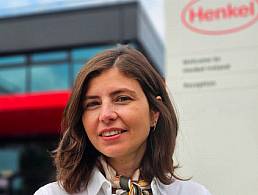As workplace wellbeing becomes more important than ever, Jenny Darmody found out about the I Am Here initiative and how it supports both employers and employees.
Workplace wellbeing has always been important. Employers and managers alike have a certain duty of care to their employees and it should always be OK not to feel OK and to ask for help when you need it.
But sometimes the words are not enough and though a workplace culture might naturally foster a positive attitude to workplace wellbeing, employers might be left feeling unsure about their ability to properly support their employees.
To address this need, entrepreneur Jim Breen set up I Am Here, a mental health and wellbeing solution for workplaces and organisations. “Business and society are witnessing a time of both significant challenge and an opportunity for change,” he said.
“Having a robust mental health and wellbeing strategy is demonstrated to act as a unique differentiator by leaders in today’s environment of rapid change. With I Am Here, organisations can help their teams build the resilience skills needed to thrive in complex environments.”
Founded in 2018, the initiative is powered by learning solutions provider PulseLearning and supported by KerrySciTech, a not-for-profit member organisation for the science, tech and engineering sectors in the Kerry region.
“KerrySciTech became an I Am Here partner and the roll out of I Am Here to the member companies is in full flight,” said Breen.
KerrySciTech programme manager Aoife O’Brien said the organisation is grounded in the belief that employees who feel well do well. “Our members prioritise workplace wellbeing because they know that helping their team members achieve a better balance in their working lifestyle benefits everyone,” she said.
“Employees are happier and more fulfilled in their working lives, and the company enjoys higher performance and productivity. Retention levels soar, and recruitment efforts are more successful; it’s a win-win situation for everybody.”
How I Am Here works
Breen said that I Am Here is designed to improve the “help-seeking and help-offering behaviours” in the workplace. “The courseware is delivered online, which is supportive of today’s remote working set-up. This can be delivered in multiple formats and is device agnostic.”
The course provides expert support across six pillars of wellbeing: emotional, physical, spiritual, social, financial, and work and career.
“Team members in an organisation can become I Am Here tribe members by completing the ‘Tribe Members’ course. Later on, these tribe members can stand up within the tribe and become I Am Here ambassadors by completing the two-hour online ‘Ambassadors’ course,” Breen explained.
“The end result is a compassionately connected team within the workplace, who then spread the I Am Here message to their families, friends and the wider community.” Breen added that the I Am Here team also remains a committed ally throughout the process for organisations.
‘A sense of community’
One company that has just started the I Am Here process is Xintec, a Kerry-based tech business, which relocated from Dublin in 2016. CEO Rob Durran said he made the move for a number of reasons, one of which was to do with talent. “We were competing for talent against some of the biggest multinational technology providers in the world and had huge overheads operating out of a city centre location. I know many business owners in Kerry and knew that there was a large pool of talented professionals living and working in Kerry that we could tap into.”
He said that while Xintec has just started the I Am Here process, it’s a great opportunity to be part of a community project to bring wellbeing to the forefront of employers’ minds. “We are on the very first rung of the ladder in terms of onboarding, but so far, the team from I Am Here has made the process very easy. Our first couple of courses and training are due to start in the coming weeks and the team are really looking forward to engaging with the project.”
It’s not just individual companies that are engaging with the I Am Here initiative. The RDI Hub based in Kerry is also rolling out the programme, both with its own individual companies as well as enlisting its own ambassadors.
Liam Cronin, CEO of the RDI Hub, said he and his team want to create a safe space for people coming back to work in a post-Covid-19 world.
“I think people may be feeling certain levels of anxiety about coming back into the workplace after working from home for such a long period of time and I think the I Am Here programme with PulseLearning and with KerrySciTech is a great way to re-acclimatise back into the workforce and be able to ask the question ‘are you OK?’,” he said.
“We’ve been working on the six-week programme as part of the RDI Hub management team and then our plan would be to roll it out to our members when we re-open on 4 August, and then new members that join the hub will have that experience as well.
“The reason the three of us in the RDI Hub management team have taken the I Am Here programme to start with is so that we can be I Am Here ambassadors. We’ve already gone through the six-week training so when our member companies are going through it and they have questions, they can come to us.”
Cronin said the RDI Hub is a space for start-ups, corporates and academia to learn and collaborate to create new sources of business growth. “One of the things we were trying to build within the RDI Hub is that sense of community where you’re in the hub as an individual company or as an individual person but getting people to work closer together and to come together and collaborate and have those serendipitous moments where new ideas come up,” he said.
How companies can change their culture
The key goal in the I Am Here initiative is about creating a communicative culture in which it’s OK to ask for help. But what other ways can companies ensure that kind of culture is fostered and developed?
Xintec CEO Durran said he believes one great learning that has come out of the pandemic is that anything is possible. “It’s proved that remote and flexible working is not only possible but can offer huge cultural benefits in an organisation if implemented effectively,” he said.
“There is no one size fits all when it comes to workplace culture, but communication is absolutely key. I think once you have an open and honest communication channel in place, a positive culture flows through that.”
Breen said that changing a company’s culture is one of the most difficult challenges for leaders. “An organisation’s culture comprises an interlocking set of goals, roles, behaviours, values, attitudes, communications approaches and assumptions. As a result, short-term fixes and ‘wash-and-go’ approaches tend not to work,” he said.
“Organisations who bring clear vision, and are consistent in how they communicate, will win the battle for cultural change.”




